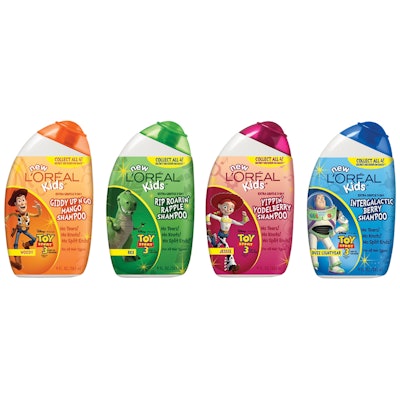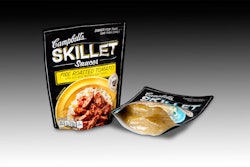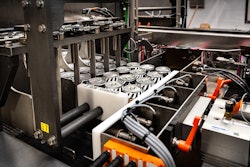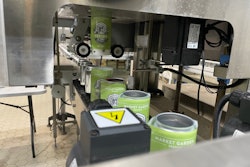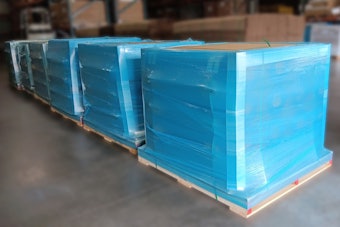The average U.S. supermarket today contains 48,000 items. It would take shoppers 11 days to get through a supermarket assuming they spent 3 seconds to make a decision on each item.
So how do shoppers behave in the store? How do they cut through the crowded and overwhelming shelves of product they encounter? It’s really quite simple. They’re driven to a grocery store out of need—think milk, eggs, bread. While racing down the aisles they are stopped by a subconscious response to packaging that stands out, packaging that’s distinctive and cuts through the clutter. Shoppers are drawn to such packages and will put them in their baskets even though they didn’t go to the store to get them in the first place.
There are three distinct parts to this process. First is the stopping power of a brand, which is a sensorial response to packaging. A single “black sheep” in a herd of “white sheep” will stand out. Packaging shape and color are the salient features that can accomplish this.
Once a package has the attention of the shopper, it must be relevant to get them to pick it up. In other words, the graphics must connect with their interests and aspirations.
The third part takes place much earlier in the game, far away from the consumer and even the store itself. It’s the part known as the supply chain. Unfortunately, it’s a part that, because it’s dominated by analog printing, is seriously limiting the brand owner of today.
The complexity of managing sku proliferation, equity colors, production art, and inventories causes brands to compromise. Brand owners are held hostage to their current analog supply chains. The result is the full impact of programs desired by marketers can never be realized due to aging and limited supply chains. Consumer Packaged Goods companies (CPGs) have been treating the analog package print industry as a commodity, describing it as nothing more than just putting “ink on substrate.” Purchasing departments go after the lowest-cost printing in such a commodity-driven approach.
The reality is that during the last decade there has been an acceleration of SKU growth. There appears to be no end in sight as brands seek a one-on-one relationship with consumers. Increased uncertainty in the marketplace is causing more remnants at the end of a product life cycle as forecasting and reordering challenges the ability for inventory management. Yet within CPGs, no one person oversees the entire supply chain. The resulting analog system cost from prepress, print tools, color management, sales samples, print costs, and remnants go unnoticed. Too many brands are achieving neither the promotional leverage nor the system cost optimization because their supply chains are simply too complex and not nearly agile enough.
Speed to market is key if brands are to capitalize on the new shopper’s desire for relevancy. Brands whose packaging is relevant have demonstrated the ability to generate engagement and interaction.
Personalized packages are on the rise and can be found across various categories and in different parts of the world. All of this is possible with digital package printing.
Brands looking for innovative ways to reach consumers and create interest are turning to digital printing. The ability to “click and print” in stunning high-definition resolution is creating irresistible shelf appeal. Examples of companies successfully deploying this include personalized Heineken beer, personalized Kleenex tissue cartons, L’Oreal Kids Shampoo, Coca Cola, personalized Goldfish from Pepperidge Farm, and more.
As mass production has shifted to mass customization, it becomes important for consumer product companies to rethink their print supply chain. Analogue supply chains can’t keep pace with the level of advances of the internet. Print should no longer be treated as a commodity to be sourced at the lowest unit cost, as so many other factors must now be weighed. Digital package printing, when properly used, can transform a brand to be irresistible to consumers and achieve rock star status.
Digital printing is more than a printing process. It can be assembled as a digital workflow. The speed in changeover time allows for fast turnaround of printed packaging materials. This allows brands to order on Monday what they will pack on Wednesday. Such short repurchase cycles allow true “just in time” packaging production. Most important, it reduces the barrier to piloting new product/package launches because it makes it possible to order small quantities without penalty.
Packaging is a simple and effective means of reaching consumers and creating delight. Packaging never sleeps! Digital printing can move shoppers to purchase and repurchase by creating interest and excitement never before possible. Digital printing has proven to be a great enabler to the consumer product companies mentioned earlier to drive value by building brands and enhancing sales growth.
CPGs that move into automated digital package printing workflows will have an advantage in the next few years. New wide-format digital presses have been announced and will be available in the next 15 months. The package printing industry will be transformed as a result, and in five or six years this will no longer be a mere competitive advantage to CPGs but a must-have to keep pace. The time is now for brands to rethink their marketing and supply chain strategies.
